All Activity
- Past hour
-
Ibanez make good guitars at every price point, so it’ll be decently built. The pickups will probably be voiced quite hot, given the genre the guitar is aimed at, but if you don’t like them, you can always upgrade them at a later date. However, you’re probably going to be using a lot of gain on the amp or through pedals for metal/rock, so a lot of your tone is going to come from there and will colour the guitar’s tone significantly. That being the case, it’s all about how it plays.
- Today
-
Short answer is 'No'. The neck has to come off to be reset; this can only be done correctly and securely by someone with experience in the job. It doesn't look to be a very expensive model, so not worth sending off for this job, so I'd suggest either keeping it 'as is', hung on the wall as decoration and sentimental value, or reading up on how this job can be done and doing it yourself, or with a local wood-working buddy. Basically, the neck has to be removed from the body; this involves using heat (usually steam...) to soften the current glue, cleaning it up, then putting it back together, at the correct angle, using the correct type of glue. It's a simple enough job for a guitar tech who handles acoustic guitars, and can be done on the kitchen table yourself, once the appropriate knowledge (and courage..!) has been assimilated, but can't be done by any other 'brute force and ignorance' method. Lesson learned, but too late, maybe; hope this helps (a little...).
-
When I was an absolute beginner, I bought this classical guitar. I put steel strings on it and played like that for six months before realizing the mistake. The neck had started ripping off. There are no luthiers nearby and the guitar doesn't mean much to me, because I've gotten myself an acoustic recently. I'd just like to hear what this guitar would've sounded like with right strings. Could I fix this with some wood glue?
-
You can't go far wrong with an Ibanez, whatever the price point, and this model has an excellent reputation, especially as a starter guitar. There are many models on the market in this range of prices; this Ibanez has nothing to fear from such rivalry. A matt black finish may be subject to marks from use, rather more than a gloss finish, but that's about the only remark not in its favour. Ignore the 'hype', for this and any other that piques your interest, and try it out yourself. You're not likely to be disappointed. Hope this helps.
-
Andico started following opinions on IBANEZ GRGR131EX BKF
-
Hi everyone I’ve been eyeing the Ibanez GRGR131EX BKF for a while now and I want to see your thoughts on this guitar. I want it as a beginner guitar for metal and rock but I wanna know if it lives up to the hype. if you ever had one or decided against buying it let me hear your thoughts. if you can recommend a better model for this price range ($250) I would greatly appreciated it. Thank you and looking forward to your opinions.
- Yesterday
-
42Hz joined the community
-
I’ve owned some awesome SS amps, nowt wrong with them IMO.
-
Many thanks for the feedback both. Seems that what I want to achieve isn't quite in the remit of my amp. I might just go back to my comfort zone of 90s solid state.
-
An EQ pedal could achieve that, like one of those 6/10 band graphics. However, I suspect that your amp may still react the same way, as it will still be receiving less/more signal. I’d be more inclined to add an overdrive pedal that will add the gain tone you’re looking for for lead, etc and then going back to your clean tone (or less driven) when off. You might find that the right pedal could be an on all the time effect, as it might react to the guitar’s volume knob in the way you’re used to. If that was the case, you could just have it on top of the amp with a short lead to the input, giving the feel of a guitar straight to the amp. EDIT: Overdrive pedals = massive rabbit hole
-
From the description of the way you've chosen the Classic 20, I'd say that you'll just have to accept its peccadilles. You can't buck physics, and if it doesn't change its tone enough presently, it's just the way it's been designed. No pedal will change that, so that's a Good Thing. It would count as being a One Trick Pony, so embrace it for what it is or find a modelling amp that can get close to the 'mild overdrive' that you want, but with greater flexibility. No recommendations (I play 'clean'; I've very rarely found any grit, disto or overdrive that adds anything to my admittedly poor playing, and, anyway, I'm a drummer, soooooo...). Not sure that this helps further; time for a visit to a decent amp shop to try stuff out, maybe..? Keep the Classic 20 as nostalgia, or get it to contribute to the cost of an amp better suited to your needs..?
-
So, is it just a case of like it or lump it? If it has the response that it currently does, how would adding a boost pedal or overdrive help? I like the tone with guitar volume at 5 and at 10, they are great for my needs, I just need a small volume increase as well. Or is there a pedal which does the reverse and creates a volume drop that then doesn't massively overload the input when switched off?
-
As Dad says, different amps, different responses. I once asked an amp tech the difference between 6L6 and EL34 power stages (typically Fender vs Marshall). He surprised me with the answer. He told me that biggest comes from where the tone stack is in the circuit, either pre or post preamp valves (Fender and Marshall are different). Couple that positioning with different output valves and output transformers (often overlooked) and you very different responses to the input. The name of this very knowledgeable amp tech - Brinsley Schwartz. I was a bit awestruck at the time, having seen him numerous times live, but he was the nicest chap and happy to nerd out on his favourite subject.
-
Thanks for this @Dad3353. Much appreciated and a detailed answer as usual. From a tone point of view I really like the Classic 20, I like the tonal variations it has and do understand that different amps have different tonal characteristics. I don't play actually clean, I find a mild overdrive sort of tone for rockabilly, blues and modern country. I have only played at home, not with a band as yet and would expect to mic amp up when I do, I don't need 'loud' really. So I am happy to have an amp that sounds right at whatever volume level that is and let the PA take the strain. You only really notice when playing along to a cd, not really when just playing with no backing. I don't want to get involved with pedals if I can help it, I have played without them for 30 years and don't want the hassle of cables and power leads. But as it stands, I just can't work out how it can be useful if I can't increase the volume output using the guitar volume enough to change from rhythm to lead on the fly. Even if I did do pedals, surely the pedals likely to give me the effect I need (volume boost and a small amount of gain/overdrive pedal) will likely just do the same as the guitar volume and just hit the amp with a stronger signal which would also give me more gain but no volume increase? Is this likely to be for most tube amps or is it just the EL84? Would a different amp suit this more style more? If not then I will just cut my losses and go back to my normal SS amp. It would be a shame as the tone is lovely overall and adds that extra sparkle that the SS sometimes lacks
-
It should be understood that each amp manufacturer, each model, and each technology, have, inherently, very different tonal responses to controls in the (very different...) pre-amps, so there is very little commonality between them. The settings, and range of result, cannot be equated from one to another. The reasons are as varied as the amps themselves : solid-state does not behave as valve stuff, and EL84 valves do not behave like KT88's etc. The effect of 'gain', 'master volume', tone controls differ; some tone circuits are 'flat' with the control at centre, some with the control max anti-clockwise, some (many..!) are never really 'flat', whatever the setting..! All of these factors make every combination of amp-cab useful for its own range, but maybe not so good at another. What sounds good at home may well not have what it takes on stage; even less so on a stadium stage. It works both ways, too; the only way to get a Marshall stack to belt out 'that' sound is to crank it, which makes it a poor candidate for bedroom practice in a town centre high-rise block of flats. In sum, it's 'horses for courses'. One amp for home, another for rehearsals, maybe another for gigs... This is one (of many...) reasons for the advent of Fx pedals in the first place : the ability to 'dial in' the required tone at any volume. It doesn't surprise me at all that the Classic 20 doesn't 'cut it' on stage. Despite having the same power valves (EL84...) as the Vox AC30, the circuits and cab are not at all the same, and the tonal response are chalk and cheese. You can never get a really clean sound from a Classic 20, at pretty much any volume; that's not how the circuit has been designed. They don't do 'loud'; certainly not the 'loud' that an AC 30 does. What are your options..? Find an amp which has the tonal variance that you need, in all the situations, you'll be playing, or have a different amp (and settings...) for each usage, or start building a pedal-board around an amp which ticks most of your boxes. It's not really a case of 'SS' v 'Valve' v 'Modelling'. It's just that all rigs have their upside and downside. Such is Life. Hope this helps.
-
Without wanting to sound like a complete numpty, I am struggling with my Peavey classic 20. I have tended to be a Fender SS or modelling amp player and I normally set a slightly crunchy rhythm tone with my guitar volume on about 5, then roll the guitar volume up to increase the volume and a little extra gain for a lead tone - the same tone but just a bit extra all round which works well to bring the volume up over the rest of the band. But this doesn't work on the Peavey classic 20. I can get a great rhythm tone the same, but rolling up the guitar volume adds almost no amp volume but just adds (too much) gain and doesn't leap out like I was expecting and certainly wouldn't work in a small band situation. Similarly I can get a great lead tone, but rolling back just reduces (too much) gain and not much volume. I tried out several amps (admittedly at the cheaper end) before buying, the peavey delta blues, vox ac10, Fender Blues Junior, Fender HRD, Laney cub 12. I preferred the smaller speaker and the slightly boxy tone of the classic 20 but now I am using it in anger as it were I am finding it lacking. I went back to try valve amps after a 20 year hiatus after hearing a guy in the local pub with a Blues Junior which sounded amazing, but he was also running a full pedal board. I don't use pedals at all, prefer just to have instrument and amplifier. What am I missing? How do people use one amp and guitar without pedals?
- Last week
-
Thanks for the reply @Kiwi, much appreciated. I was just getting nervous as I've never ordered a custom guitar before and have never actually met Jon (all was organised via email), but everything you said tracks and puts my mind at ease, so I'll just leave him to get on with it until he gets in touch. Cheers
-
He built me a 6-string bass back in 2009 which I sold last year and two years ago I built a custom guitar body under his supervision. He works at his own pace, he prioritises quality and believes his reputation is based on the quality of his workmanship and I've generally observed that he doesn't respond to pressure. He's also been overwhelmed by orders since COVID. You could talk to Oz who runs the Owl Sanctuary guitar workshop from the floor upstairs at Jon's premises. https://ozzyowl.co.uk/ He could build you a custom guitar and he would probably go to Jon with any questions about your build. So you might end up with something not far off what Jon might have built himself
-
Kian joined the community
-
st1ggyl started following Anyone had Jon Shuker build them a custom guitar?
-
Sorry if this isn't the right place to ask this... I don't doubt the quality of Jon's work but I've only contacted him via email (the one on his website) and things have been a little different to how I'd expected. I'm not sure if it's a case of "master engineer takes his time" in which case yeah, fair enough. I just wondered if anyone else has had a similar experience?
-
st1ggyl joined the community
-
MikkoKarhula started following Bossa Dorado and lesson
-
One of the major gypsy jazz standards you should know if you are interested in that style. The piece is here in form of advanced solo guitar arrangement and there's also lesson part in the video that you can check out. I hope you enjoy it! Cheers, Mikko Video Tabs
-
Just go for a used Boss Katana 50W, it's the do-everything amp and would be great for a beginner if the preamp out/power amp in sockets aren't needed. The 100W version is scary loud on stage as well.
-
They've had great reviews online so far.
-
Generally because either 1) You're playing too hard or; 2) There is a sharp edge somewhere on the hardware, depending on where the string is breaking.
-
Good evening, @Gooner, and ... ... Plenty to read and amuse you here, and lots to learn and share. A Good Question, but we will need a little more detail in order to really help. How long have the strings been on the guitar(s), and how long have you been playing..? Do you play with fingers only, or with a plectrum..? Is this always the same string breaking, or is it just any string..? Does it break whilst tuning up or whilst playing..? Do you use a tuner when tuning the guitar(s)..? Is the break always at the same spot along the string length..? What gauge are the strings..? Over to you...
-
Gooner started following Breaking strings
-
acoustic guitarist.. tried 2 different guitars.. why do I keep breaking strings!'
-
Gooner joined the community
- Earlier
-
About ten years ago I'd have said Fender MiM and PRS SE were good there, though increasingly their new price is pushing higher and pulling up the used price with them. The new Fender Standard series have been much-mocked by people keen to write them off as rebadged Squiers, but that's grossly unfair. The Guitar Geek did a video comparing one directly to a Squier CV Series Strat, and they are different beasts - different factories, different innards. Now whether somebody wants to pay the extra for them might be another matter, but.... They've clearly been introduced for a specific target market, that being players who can't stretch to the price of a Player Series (street price, I'm very rarely seeing those new for under £600 nowadays), but looks down on a Squier. I have a feeling these could be a sleeper that will be a great buy when they start to filter onto the used market. While made in the Far East, the specs are basically a rerun of the pre-2018 MiM Standard Strat that was replaced by the Player Series - poplar body, 21 frets, 9.5 radius, 42mm nut, slightly hotter pickups, full size pots. If they did a left hander I'd be seriously considering one of the 'Candy Cola' models with the maple board... as it is, if one came up used stupid cheap, I'd buy and Hendrix. I wish they would do one of these with a six-screw trem and a big headstock... then I'd *definitely* be looking for a Hendrix project. Harley Bentons I love.... but would be wary of buying used. I've seen one too many "optimistically priced" on eBay, at well over the new price. Those that do sell seem to go for so near the new price that unless it was a model that was out of production (like the 25th Anniversary limited edition Jazz Bass I really wanted, but lost the chance to buy when our then dog needed her tail docked after she bit the end off it, bless her), I don't think it's worth going used. Squier are always worth looking at used, especially the Classic Vibe series - which, yeah, I'll stick my neck out and say are Fender's purest realisation of Leo's concept of an affordable, giggable guitar that can be cheaply maintained and repaired. Not the very *best* *guitars* Fender have ever made, but in terms of VFM as a working player's tool.... I've seen very good deals on the 2xxx series Gretsches used. They tend to be just a *little* more generic in sound, a little less the distinctive Gretsch difference than a 5xxx or especially the Professional 6xxx series, but they are great guitars in their own right, and they have that very cool vibe going on - immediately different from yet another F or G style. JHS's Vintage brand tend to go surprisingly cheap used, and for the money are an excellent buy. If you like the Gibson styles, their earlier models tend to be just a little closer the "real" shapes, especially the SGs. Their SG style ones are a real hidden gem. Their Fenderalikes tend to look much more like the real thing in the body, though if you can try before you buy as the necks aren't for everyone. They tend to favour a US-style 43mm nut over a more vintage 42mm nut. Some folks find that matters, others don't. MiM quality, selling used for Squier money. The 'Icon' series can be a nice option if you like the relic look buy don't want to pay out the big money. Up close they're not the same as the Fender relics, but thy have the general look from a few feet away, and if you like the relic vibe, they're a bit of fun, affordably. As long as you're not left handed you're gold - they're as piss poor as Squier for lefty provision.



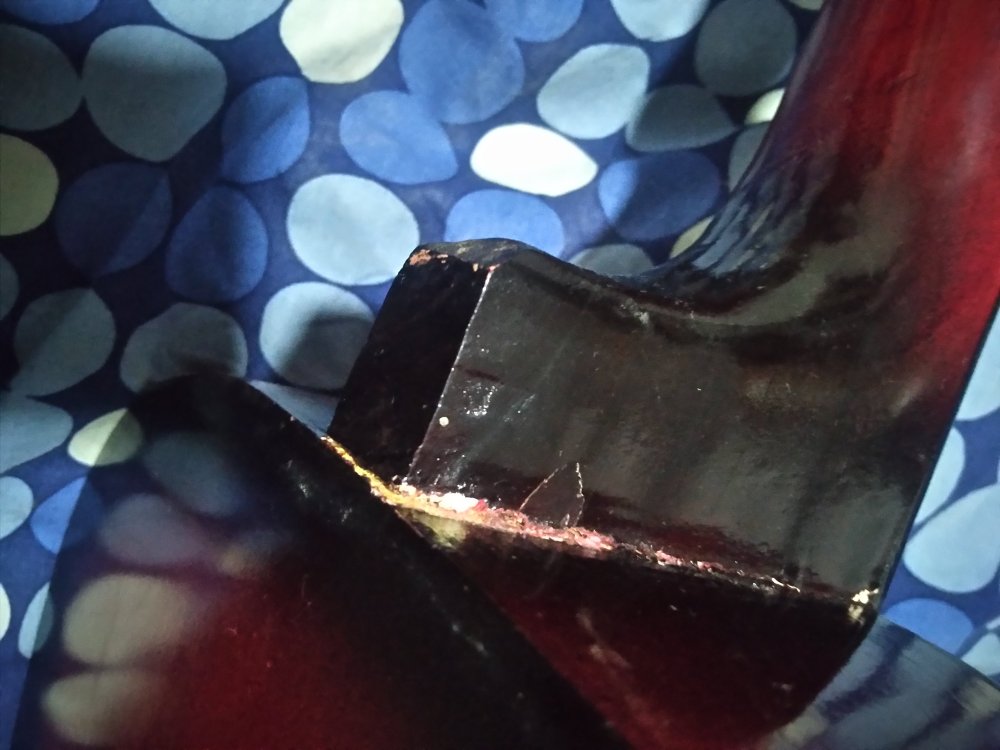
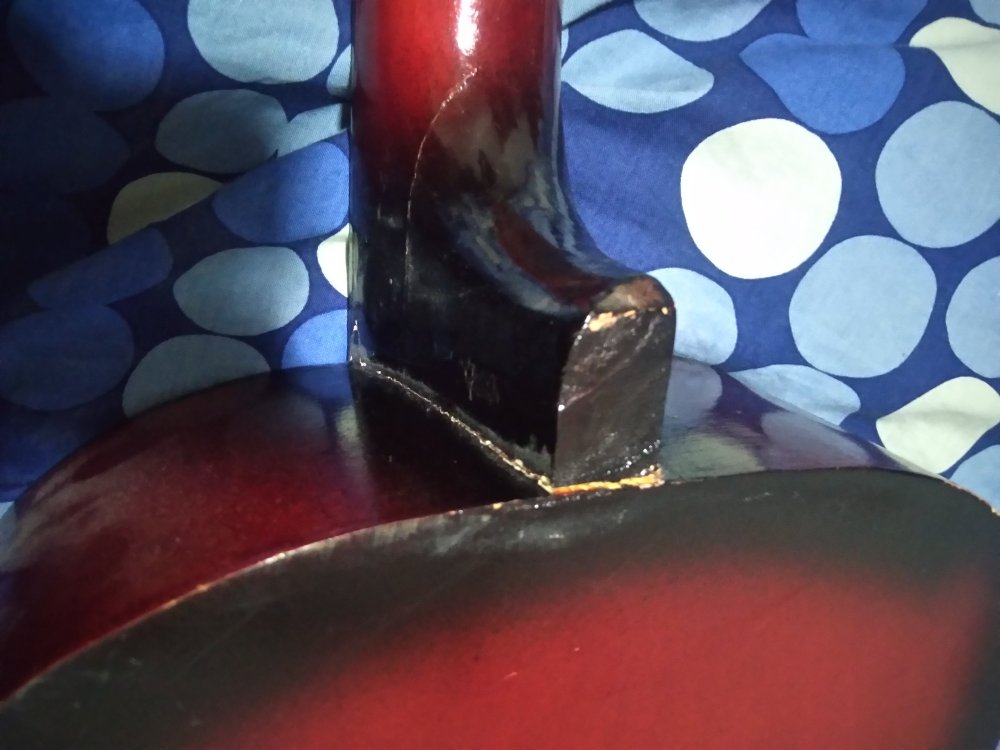
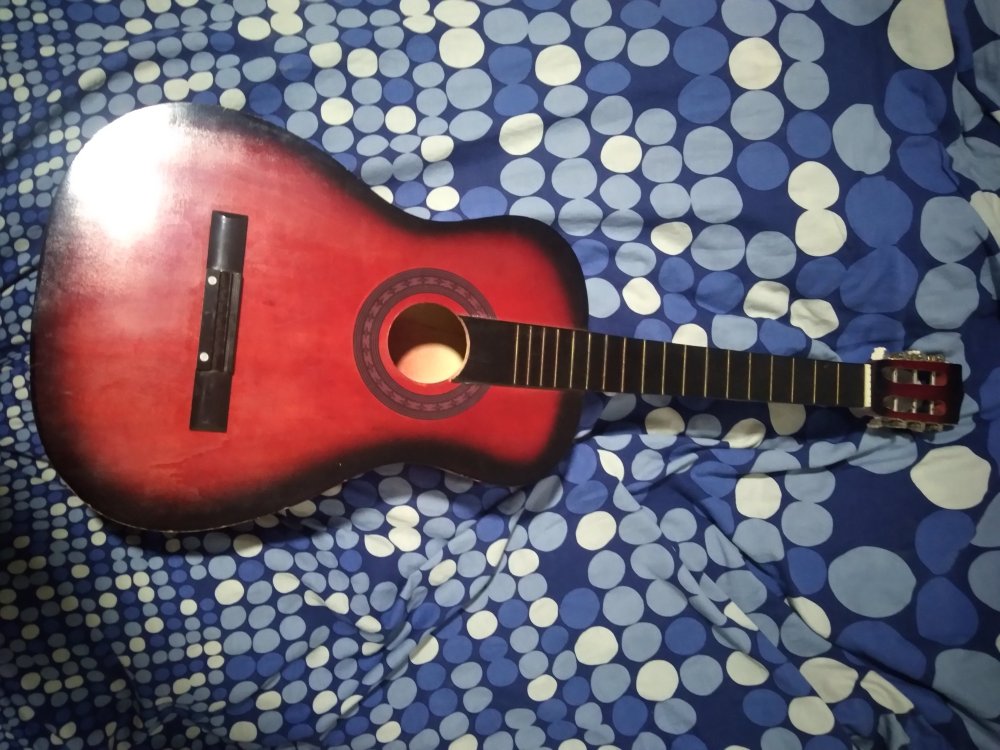


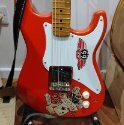

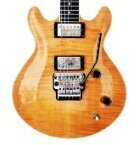


.thumb.jpg.2f0f241a63381e5644f287abacd76760.jpg)